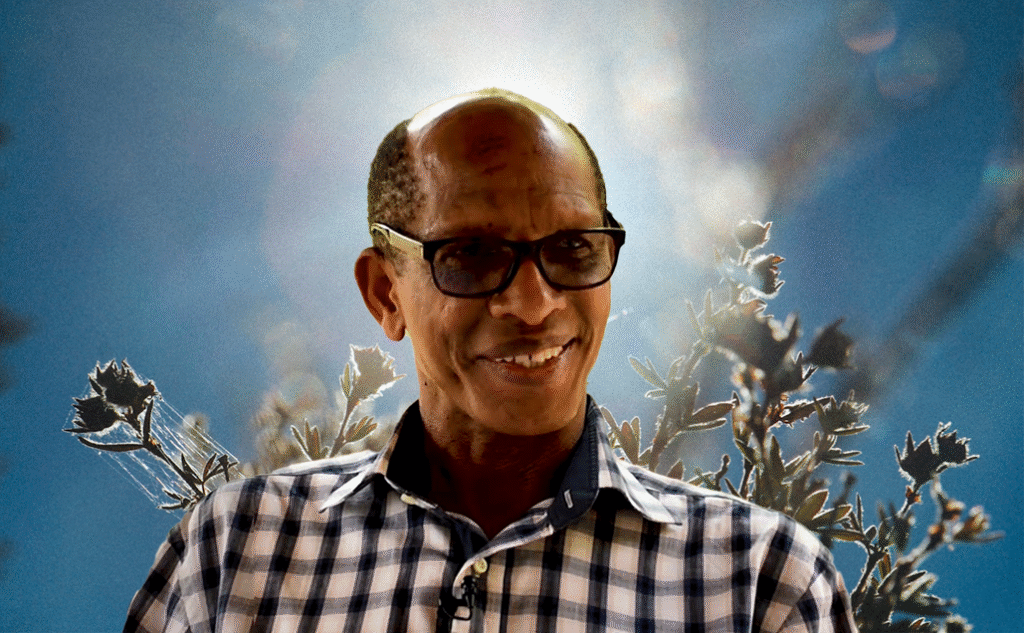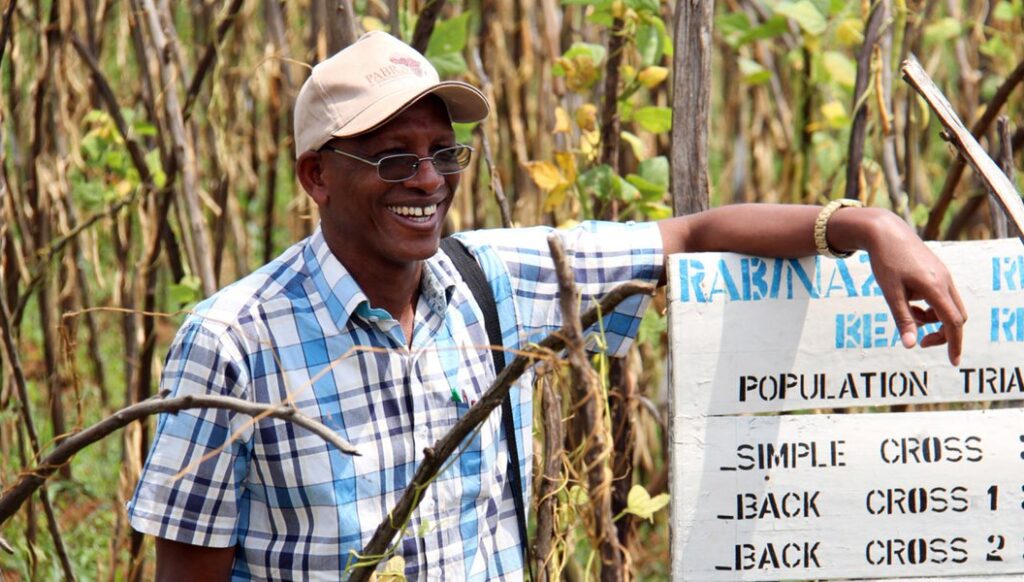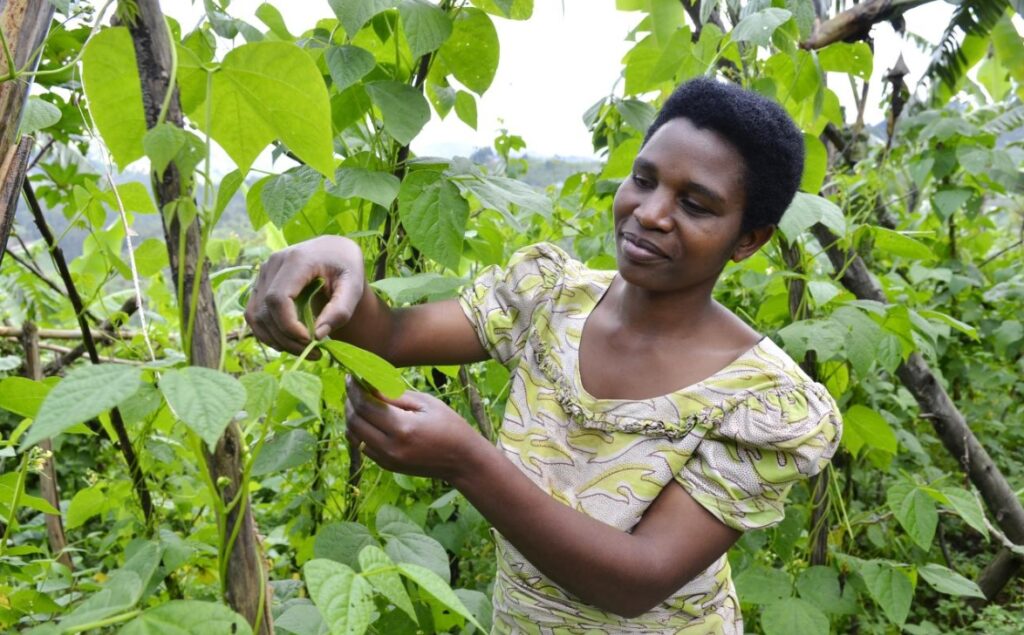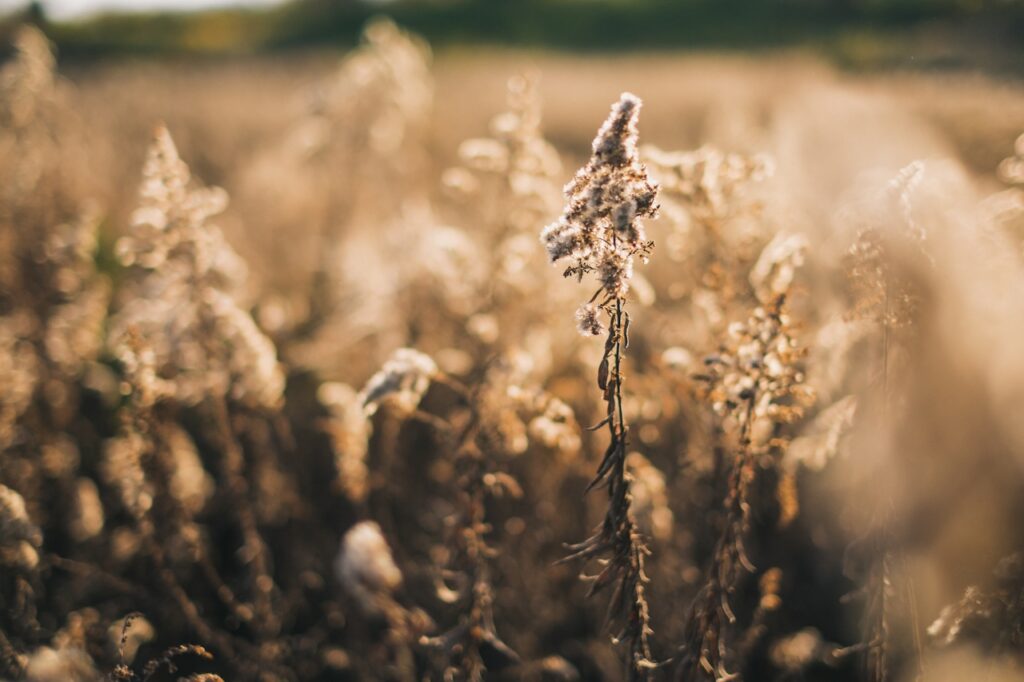
Market-Led Sustainable Seed Systems: The Jean Claude Rubyogo Approach
When new crop varieties are released, their success is not guaranteed. Improved seeds may carry higher yields or better disease resistance, but these traits alone do not ensure adoption. Adoption happens when farmers see a clear route to market, and when traders and processors signal real demand.
Meet Jean Claude Rubyogo, the quiet architect behind one of Africa’s most successful seed system transformations. For over two decades, he has led the Pan-Africa Bean Research Alliance (PABRA), working under the CGIAR Alliance of Bioversity International and CIAT. Through his demand-driven breeding model, he has helped re-imagine how improved bean varieties reach farmers, especially in East and Southern Africa.
As a young researcher, Jean Claude saw first-hand how new varieties affected livelihoods. His mother, herself a bean farmer, was an early tester of improved beans and shared them with neighbours. It was here that Jean Claude began to understand both the promise and the limits of plant breeding. His revolutionarily approach realigned breeding to demand; to what farmers, traders and consumers actually want, rather than to traits alone.

Image courtesy of PABRA
From Distribution to Demand
For years, seed initiatives often followed a familiar script: distribute improved varieties, hope for uptake, then watch adoption fade when funding ended. Jean Claude took a different path.
In 2004, after drought in Ethiopia, he was asked to oversee a relief programme to distribute bean seed. Instead, he brought the whole system around the table — policymakers, researchers, cooperatives, NGOs – and local seed traders.
The picture that emerged was decisive. Most farmers sourced seed through informal markets, not the formal seed sector. Traders described what those markets would buy and at what price. They were paying $300/ton for clean, sorted white and navy beans, roughly double the price of the commonly grown Mexican 142 (about $150/ton). As new exporters were licensed, demand for Awash types surged. Farmers adjusted quickly: higher planting densities, three weedings, threshing on canvas, and better sorting to meet canning and export specifications. A short-term relief input became the starting point for a sustainable seed system.
“Traders drive variety adoption.” — Jean Claude Rubyogo
Listening to the Market
The Ethiopia experience crystallised a principle: markets pull successful varieties into use. Traders don’t just buy grain; they provide credit, guarantee outlets and reduce risk for farmers switching to new types.
At the Pan-Africa Bean Research Alliance (PABRA), where Jean Claude served as Global Bean Programme Leader, this translated into a practical model:
- Rapid farmer feedback using the visual ribbon field method to capture women’s and men’s preferences quickly and at scale.
- Key-informant market intelligence from traders and processors to align early selection with commercial reality.
- Breeding organised by market class (e.g., yellow beans, white/navy, red kidneys, sugar/cranberry) so new releases matched recognised buyer segments from the outset.
The result was a pipeline where market acceptability became a design constraint, not an afterthought.

Image credit Jean Claude Rubyogo for CIAT
A Market-Led Breeding Revolution
Reframing breeding around market classes did not sideline agronomy; it connected it. Programmes targeted disease pressures (anthracnose, rust, bacterial blights, viruses) while ensuring traits that buyers value, uniformity, size, colour, cooking quality, were baked in. Processors and exporters screened early materials; farmer panels validated performance and use. The system linked breeding → seed multiplication → grain production → trade → new cultivar delivery in one loop.
Impact Across Africa
- Ethiopia (2004–2018): adoption of improved beans rose from 10% to 65%; yields increased from ~0.5 to ~1.7 t/ha; area expanded and production rose by more than 70%.
- Uganda (2010–2022): bean export value grew from $10m to $132m.
- Rwanda: climbing beans replaced bush types on ~45% of production areas (from ~5% in the early 1980s), improving food security and incomes.
These outcomes were not driven by distribution alone. They followed when breeding, seed and grain markets were aligned, and when traders had reasons to pull specific varieties through the system.
Beyond the Laboratory
For Jean Claude Rubyogo, seeds are part of an economic system as well as a biological one. When programmes listen to farmers and traders, pair agronomic performance with market fit, and treat profitability and choice as central, adoption follows and lasts.
That is the core of market-led sustainable seed systems: varieties that don’t need to be pushed because the market is asking for them.

